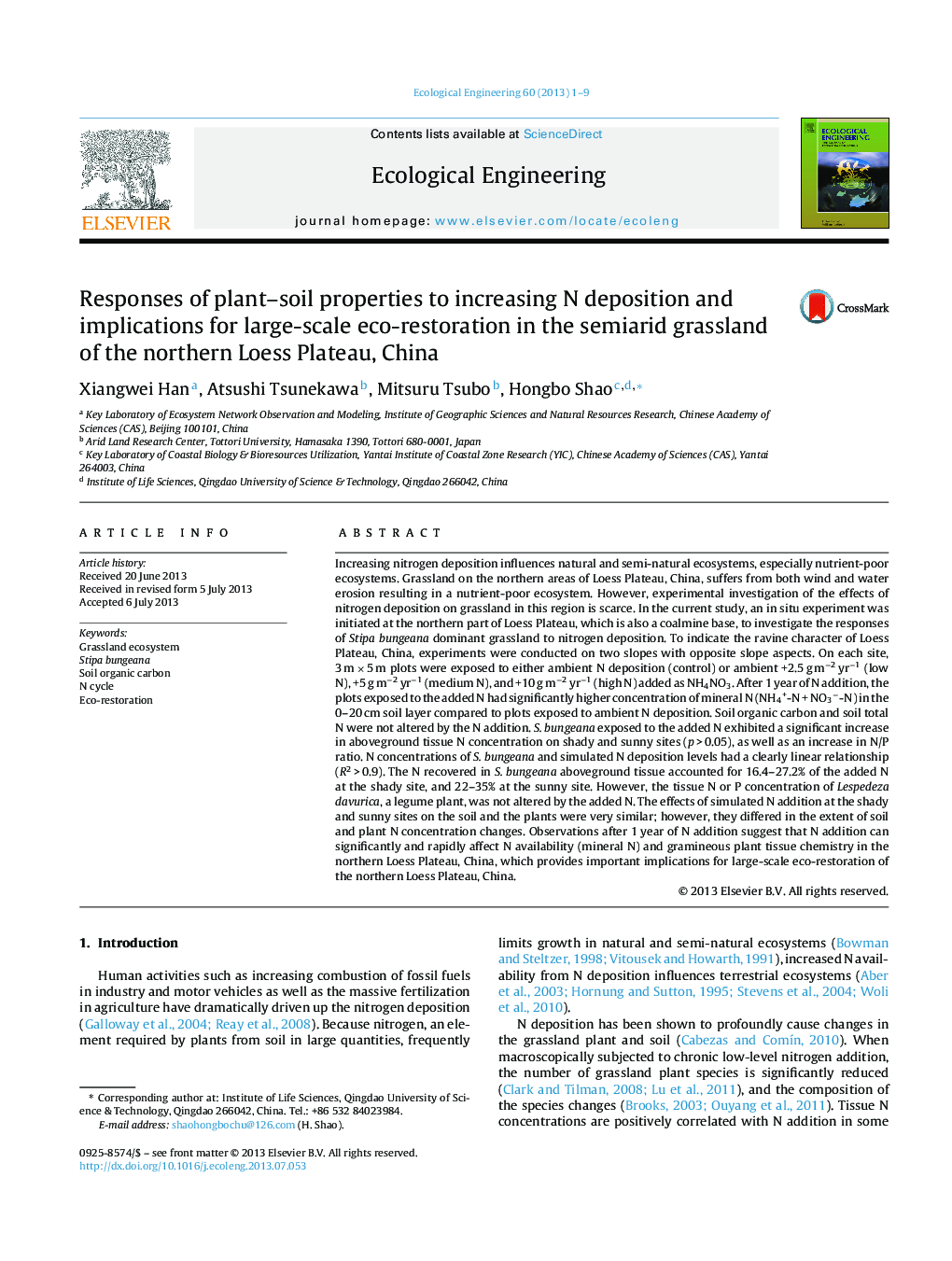| Article ID | Journal | Published Year | Pages | File Type |
|---|---|---|---|---|
| 6302339 | Ecological Engineering | 2013 | 9 Pages |
Abstract
Increasing nitrogen deposition influences natural and semi-natural ecosystems, especially nutrient-poor ecosystems. Grassland on the northern areas of Loess Plateau, China, suffers from both wind and water erosion resulting in a nutrient-poor ecosystem. However, experimental investigation of the effects of nitrogen deposition on grassland in this region is scarce. In the current study, an in situ experiment was initiated at the northern part of Loess Plateau, which is also a coalmine base, to investigate the responses of Stipa bungeana dominant grassland to nitrogen deposition. To indicate the ravine character of Loess Plateau, China, experiments were conducted on two slopes with opposite slope aspects. On each site, 3 m Ã 5 m plots were exposed to either ambient N deposition (control) or ambient +2.5 g mâ2 yrâ1 (low N), +5 g mâ2 yrâ1 (medium N), and +10 g mâ2 yrâ1 (high N) added as NH4NO3. After 1 year of N addition, the plots exposed to the added N had significantly higher concentration of mineral N (NH4+-N + NO3â-N) in the 0-20 cm soil layer compared to plots exposed to ambient N deposition. Soil organic carbon and soil total N were not altered by the N addition. S. bungeana exposed to the added N exhibited a significant increase in aboveground tissue N concentration on shady and sunny sites (p > 0.05), as well as an increase in N/P ratio. N concentrations of S. bungeana and simulated N deposition levels had a clearly linear relationship (R2 > 0.9). The N recovered in S. bungeana aboveground tissue accounted for 16.4-27.2% of the added N at the shady site, and 22-35% at the sunny site. However, the tissue N or P concentration of Lespedeza davurica, a legume plant, was not altered by the added N. The effects of simulated N addition at the shady and sunny sites on the soil and the plants were very similar; however, they differed in the extent of soil and plant N concentration changes. Observations after 1 year of N addition suggest that N addition can significantly and rapidly affect N availability (mineral N) and gramineous plant tissue chemistry in the northern Loess Plateau, China, which provides important implications for large-scale eco-restoration of the northern Loess Plateau, China.
Related Topics
Life Sciences
Agricultural and Biological Sciences
Ecology, Evolution, Behavior and Systematics
Authors
Xiangwei Han, Atsushi Tsunekawa, Mitsuru Tsubo, Hongbo Shao,
